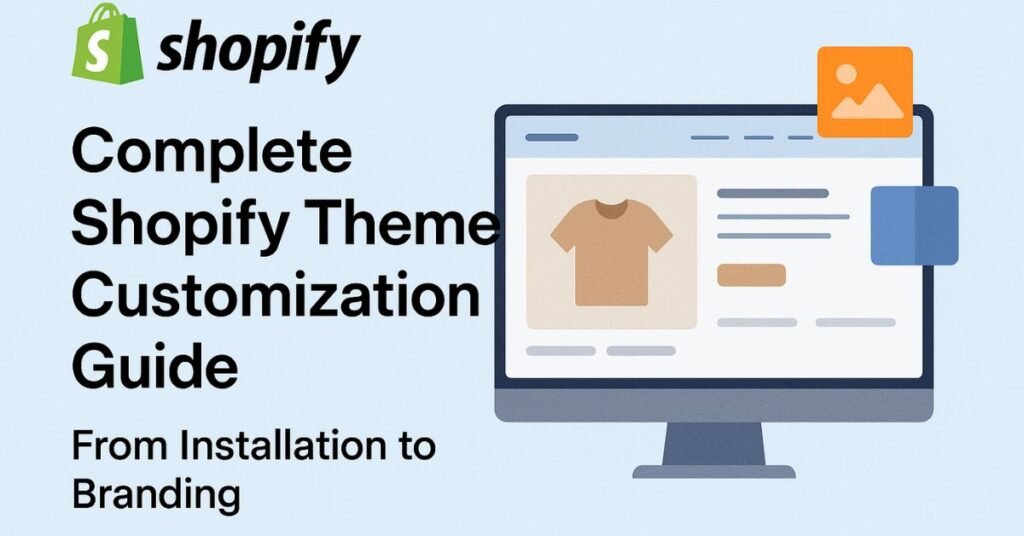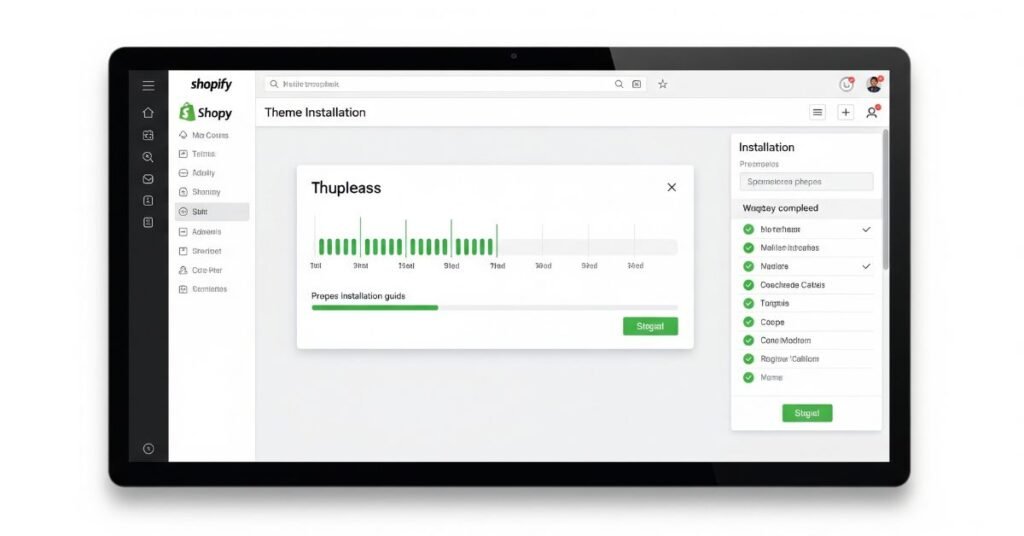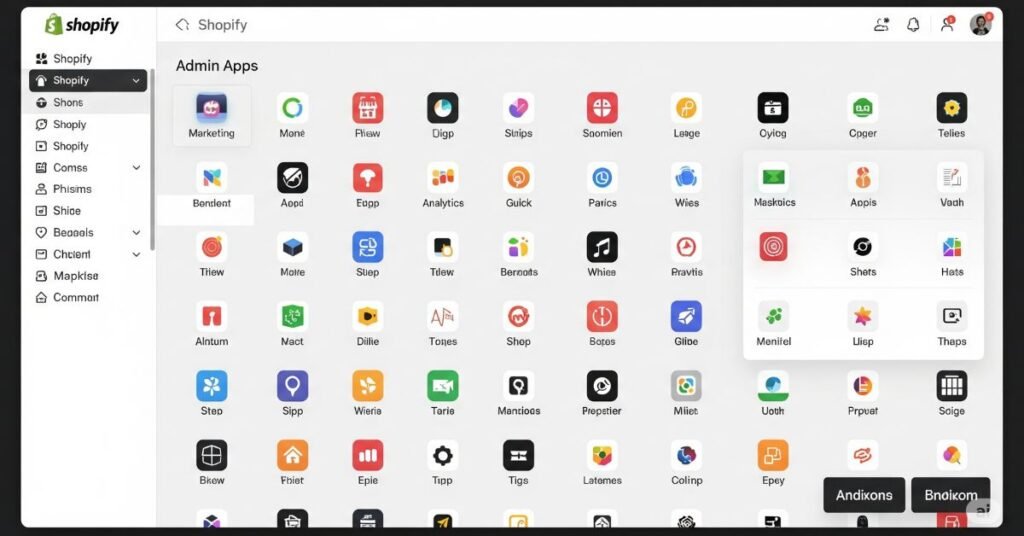
Learn how to choose, install, and Shopify theme customization. Step-by-step guide with branding tips, Liquid basics, and mobile optimization advice.
When I started my first Shopify store, Shopify theme customization felt like a big mystery. I had a vision, but I didn’t know how to bring it to life. There were so many settings, tools, and options—it was overwhelming. But I figured it out step by step, and now I want to help you do the same. In this guide, I’ll show you how to pick the right theme, install it, and make it your own. We’ll also cover things like Shopify Liquid, logo design, and mobile tweaks. Let’s turn your store into something that feels real, works well, and gets noticed.
Choosing the right Shopify theme is a big step. It can shape how people feel when they land on your site. When I started my first store, I picked a theme that looked good—but it didn’t fit my products or my audience. I learned that looks aren’t everything.
Start by thinking about what you sell. Shopify has themes made for different types of stores—like fashion, art, tech, or food. If your store sells handmade crafts, a theme for tech might feel off. Using a theme that fits your niche makes your store feel right from the start.
Next, check how it looks on phones. Most people shop from their phones now. A theme that looks great on desktop but is messy on mobile will cost you sales. When I test a theme, I open it on my phone first. That’s where most of my buyers come from.
Speed matters, too. A slow site can push people away. I once used a fancy theme that loaded too slow. My bounce rate went up. Now, I choose light, fast themes. They keep things smooth and help with SEO.
Look for themes that let you make easy changes. Some themes only offer basic tweaks. Others let you move sections, change colors, and add blocks without code. I love themes that work well with Shopify’s drag-and-drop editor.
Also, make sure it works with apps. I use design tools like PageFly and Shogun. Some themes don’t support them well. Before you pick a theme, check its app support. That can save you trouble later.
When I finally found the right theme, it just clicked. It was fast, clean, and felt like a good fit. My sales went up, and people stayed longer. If you’re wondering how to choose a Shopify theme, start simple. Think about your brand, your shoppers, and what feels right.

Installing a Shopify theme is easier than it sounds. When I did it for the first time, I expected it to be a long, tricky process. But it only took a few clicks. Once you know where to look, it’s pretty smooth.
First, go to the Shopify Theme Store. You’ll find both free and paid options. Free themes are great when you’re starting out—they’re clean, fast, and supported by Shopify. I used Dawn for my first store. It had all the basics and was easy to edit.
If you want more features or a special design, check out the premium themes. They cost more but often give you more control and built-in extras.
You can also find themes on trusted third-party sites like ThemeForest. Just make sure the theme you pick is up to date and well reviewed.
Once you find a theme you like:
That’s it. The theme is ready to use.
If you downloaded a theme from another site:
Seeing is believing. Adding visuals to each step can make the process even easier. If you’re writing a guide or teaching someone, screenshots help remove the guesswork. I often record a quick video when showing friends how to do this—it saves time and avoids confusion.
So, your theme is set up. Now it’s time to make it yours. This is where your brand comes to life.
When I opened the editor for the first time, I froze. So many tabs and tools. But I started small. One color. One font. That’s all it took to feel like I was in control.
The theme editor is where you make your store look good.
To find it:
Go to Online Store → Themes → Customize
You’ll see your store on the right and a menu on the left. You can click on each part of your page and change it. You can also switch between desktop and phone view.
This is where the fun begins.
I once picked bright red for my buttons. Bad idea. It clashed with my logo. I switched to soft green. It felt calm and clean. My bounce rate went down.
The top and bottom of your store matter a lot. They help people move around and trust you.
I once hid my contact link in the footer. People missed it. I moved it up top. Sales support got fewer emails, and customers got help faster.
Let’s say you want to show off a best-seller. Here’s how:

When I first heard about Shopify Liquid, it sounded complicated. I thought only coders used it. But after a while, I learned it’s not so hard. Liquid can make your store look and work better. Once I understood the basics, it became one of my favorite tools.
Liquid is the language Shopify uses to show your store’s content. It helps pull in information like products, images, and collections. Then, it arranges everything so your store looks great.
You should care because Liquid lets you go beyond basic editing. It gives you more control over how your store looks and works. You don’t need to be a coding expert to use it.
Liquid can help you do many things. Here are a few simple examples:
At first, Liquid seemed tricky. But when I started, I saw it was simple. I added a “Featured Product” section to my homepage with just a few lines of code. It worked great.
But remember: Always check your changes before they go live. I once added something to my store and forgot to check the mobile view. It didn’t look right on phones. Lesson learned!
There are lots of ways to learn about Liquid. Shopify has a Liquid guide to help you start. You can also find great tips on Shopify Compass and the Shopify forums.
You don’t need to learn everything at once. Start small. Make a few changes. Then, test them. Over time, you’ll get better.
When I first opened my Shopify store, branding felt hard. I didn’t know how to make it look like me. I had my products, but not a clear style. It took a lot of time, mistakes, and bad designs before I got it right. I want to help you skip that part and make things easy.
Think about your favorite brands. What do they share? It’s not just the logo or colors. It’s how they make you feel. Good branding builds trust. It helps people know and remember you. For your store, your brand is key. It gives the first impression—and online, that first look is all you get.
At first, I didn’t see how much branding mattered. But when I fixed my logo and design, things changed. People stayed longer. Sales went up. It made a big difference.
Making a logo doesn’t have to be hard. I didn’t hire a designer at first. That helped me think about what my store stood for.
If you want to do it yourself:
Keep it simple. Your logo should match your brand’s feel. Is it fun and playful? Or clean and modern? Try out different shapes, colors, and fonts. Go with what fits your vibe.
Not sure where to begin?
Try these tools:
I used Canva for my first logo. It was quick and easy—and it looked good!
When to hire a designer:
If you want a pro look, hire a designer. Just give them clear info. Share your style, colors, and brand mood. A good designer can bring your ideas to life.
Here are tools I’ve used and loved:
These tools saved me time and money. But if you want a one-of-a-kind logo, a designer can be worth it.
Branding works best when it’s the same across the board. Once you pick your logo, match the colors, fonts, and voice. I didn’t do this at first. I used too many fonts and colors. It looked messy.
Now, I stick with the same fonts and colors. It makes my store feel clean and pro. It also helps people know my brand when they see it.
Pro tip:
Use 2–3 main colors and 1–2 fonts. Keep it simple. That’s what works best!

When I first started with Shopify, I used only the built-in tools. They were fine, but I wanted more control. I needed my store to look just right. That’s when I found some great design apps. These tools changed everything for me—and they can for you too.
Quick answer: Shopify apps like PageFly, Shogun, and TinyIMG help you design your store, even if you don’t know how to code.
These apps make your store look better. They also save time and stress. Here are the ones I turn to again and again.
1. Drag-and-Drop Page Builders
Try PageFly or Shogun. These tools let you build pages fast. You drag and drop what you need. I used PageFly to make a sales page for the holidays. It looked great, and sales went up.
2. Code Tweaks (Only If You Want To)
You don’t have to use code. But if you want to, apps like Custom CSS Pro are great. I used it to fix how my product titles looked on mobile. The page looked better in just five minutes.
3. Speed Up Images
Big images slow your store down. I learned that the hard way. Now I use TinyIMG. It makes images smaller, but they still look sharp. My store loads faster, and that helps keep shoppers around.
When to Use Apps Instead of Shopify’s Tools
Start with what Shopify gives you. It’s easy and works well. But if you can’t get the look you want, try an app. That’s what I do. If I can’t fix it in five minutes, I look for an app to help.
Final Thoughts
You don’t need to be a designer. You don’t need to code. You just need the right tools. These apps helped me a lot. I hope they help you too.
Short answer: Your store must look good on phones. Most people shop on mobile.
When I opened my store stats, I got a shock. More than 75% of my visitors were on phones. But my site was built for desktop. It was slow. The buttons were small. The layout broke.
I lost sales just from that.
Now I know: If your store looks bad on phones, you lose money.
Short answer: A mobile-first store loads fast, looks good, and makes more sales.
Most people shop on their phones. They scroll in bed. They browse in line. Your site has to work in all of those spots.
Google also checks how your site runs on mobile. A fast site helps you rank. That means more clicks and more sales.
Here’s a key fact: 7 out of 10 people will see your store on a phone. If it’s not smooth, they’ll leave.
Short answer: Use Shopify’s theme editor to check your mobile view and fix problems fast.
In the theme editor, look for the phone icon. Tap it. You’ll see what your site looks like on a phone.
Here’s what I do:
Maybe a button is too small. Or the text is hard to read. Or an image loads slow. Fix those fast.
Short answer: Make sure your images, text, and buttons fit the screen and are easy to use.
Your site should work on all screens. That’s called “responsive” design.
Here’s what helps:
When I built my first Shopify store, I thought choosing a theme would be the hard part. I was wrong. The real challenge? Making the store feel like me. I wanted it to look clean, work smoothly, and give customers a great experience—but I had no clue where to start.
I remember sitting at my laptop for hours, clicking through theme settings, changing colors, then changing them back. I once spent two days picking fonts. Two days! All because I couldn’t decide between “modern and bold” or “minimal and calm.” Spoiler: I picked calm. It matched the brand better—and customers stayed longer because of it.
One of my biggest mistakes? Thinking I had to do everything at once. I tried to customize every page, add all the features, and make it perfect. The result? A cluttered mess. My homepage looked like a puzzle with too many pieces jammed in. Sales didn’t move. People bounced. I felt defeated.
But then I paused. I went back to basics. I stripped the homepage down to one goal: get people to my best-selling product. I added a clean banner, a short tagline, and a featured product block. That was it. The bounce rate dropped. Sales picked up. Sometimes less really is more.
I also learned to test everything on mobile. I can’t count how many times I made something look great on desktop—only to realize it broke on phones. Buttons were tiny. Images were cut off. It was a mess. Now, I design mobile-first. It’s faster, simpler, and way more effective.
If you’re just starting out, here’s what I’d tell you: Don’t stress about being perfect. Your store will evolve. Start with the basics. Focus on what matters—clear layout, mobile design, fast speed, and your brand vibe. The rest can grow with you.
Shopify customization doesn’t need to be scary. Once you get the hang of it, it’s actually fun. It’s like decorating your space—just online. Make it yours. Make it feel like something you’re proud to share.
Customizing your Shopify store isn’t just about making it look nice—it’s about creating an experience that feels right for your brand and your customers. From picking the perfect theme to fine-tuning colors, fonts, and layouts, every tweak brings you closer to a store that truly feels like you.
Read More: How to Start a Shopify Store
Contact us at the Consulting WP office nearest to you or submit a business inquiry online.
NextoBrand – Your trusted partner for web development, digital marketing, Shopify store design, and branding. Let's build something extraordinary together.
Don’t miss our future updates! Get Subscribed Today!
Copyright NEXTOBRAND © 2025 All Rights Reserved